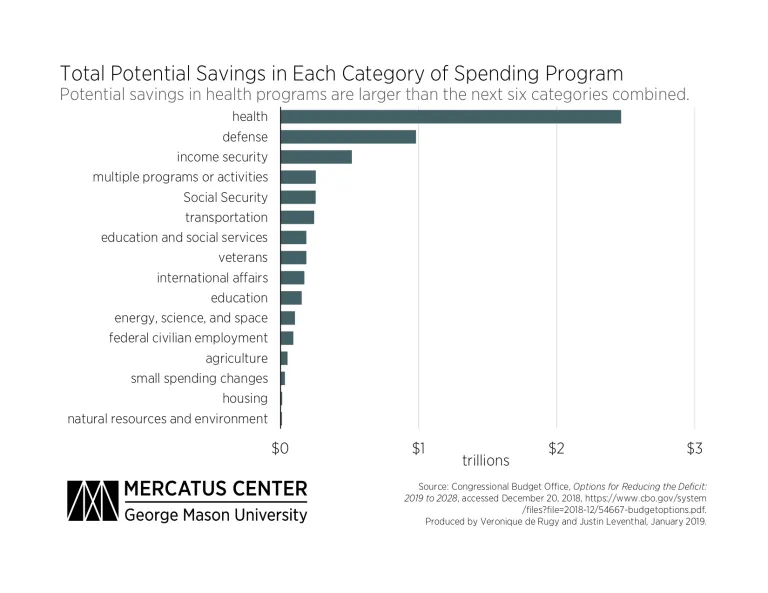- | Expert Commentary Expert Commentary
- |
New Research on Housing, the Federal Deficit, and a 70 Percent Marginal Tax Rate
Research Round-Up: February 18, 2019
Housing Supply in the 2010s
Salim Furth | Working Paper
From the summary: "Many metropolitan areas fall substantially short of their potential levels of housing development. In these environments, regulatory policies impede growth, resulting in a smaller housing supply than necessary to keep up with rising demand. When policymakers fail to adequately identify and address this trend, rent prices rise to meet demand, and the prospect of housing affordability recedes further into the distance.”
The End of Policymaking and the Rise of Mandatory Spending
Veronique de Rugy and Jack Salmon | Policy Brief
From the brief: "The dilemma of declining fiscal democracy and the increasing futility of policymaking is not a problem rooted in government revenue shortfalls. Driven by the ceaseless growth in entitlement programs, this is a spending problem. Rather than increasing the tax burden, with negative repercussions for economic growth and dynamism, the real solution to this dilemma is found in reforming Social Security to reduce future outlays while also implementing more effective rules to immediately reduce discretionary spending.”
CBO Offers Many Options to Reduce the Federal Deficit
Veronique de Rugy and Justin Leventhal | Data Visualization
From the publication: "Looking at both mandatory and discretionary spending together, health and defense programs represent the largest of those programs the CBO identified for deficit reductions. Health programs alone represent $2.5 trillion in potential deficit reductions over the next decade. Defense spending represents nearly another trillion dollars of possible deficit reductions. Policymakers need to make a serious effort to constrain runaway budgets and debt. This CBO report is a good starting point.” 
Colorado Occupational Licensing: Barriers to Opportunity in the Centennial State
Matthew D. Mitchell | State Testimony
From the testimony: “Licensing represents a significant and growing barrier to work. Nationally, the share of the workforce that is required to have an occupational license has increased more than fourfold in the past 50 years. As of 2015, nearly one in five working Coloradans—17.2 percent of the state’s workforce—was required to be licensed.
"Aspiring entrants to a large number of professions—ranging from travel guide and gaming supervisor to cosmetologist—are now required by the state of Colorado to obtain a government-issued license to work. It can take years and hundreds or even thousands of dollars to obtain these licenses. Among 34 low- to moderate-income occupations licensed by Colorado, the average aspiring worker is required to spend 260 days in training and pay $344 in fees before he or she may obtain a license. This does not count either the cost of the education or the income that people forgo when they spend months in often-unnecessary training. According to the Institute for Justice, Colorado’s licensing laws are the 36th most burdensome in the country.”
The Cost of a 70 Percent Marginal Tax Rate
Veronique de Rugy and Jack Salmon | Policy Brief
From the brief: "Today there is no country in the OECD with a top tax bracket of 70 percent. In fact, the top combined income and payroll tax rate in the United States currently exceeds that of Germany, the United Kingdom, and Norway, and is only 7 points behind that of France. Unlike the United States, Europe finances its generous welfare programs through very high value-added taxes that are paid by the entire population.
"In European countries with significant revenue collections as a percentage of GDP, taxes are generally high for everyone. Denmark, Sweden, and Finland have broad-based value-added taxes at 24–25 percent and high payroll taxes. As the Tax Foundation’s Kyle Pomerleau notes, “Their income taxes have high marginal tax rates, but they apply to much more personal income than what Ocasio-Cortez is proposing. Denmark’s top marginal tax rate of 60 percent starts applying at 1.2 times the average income. If that were enacted here, all taxable income over $56,500 would face a 60 percent tax rate.”